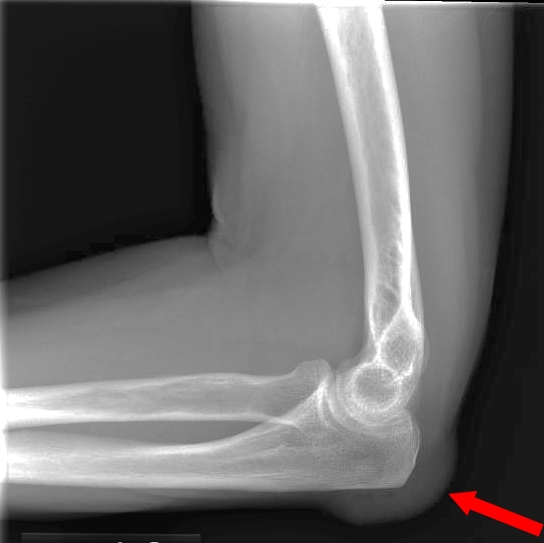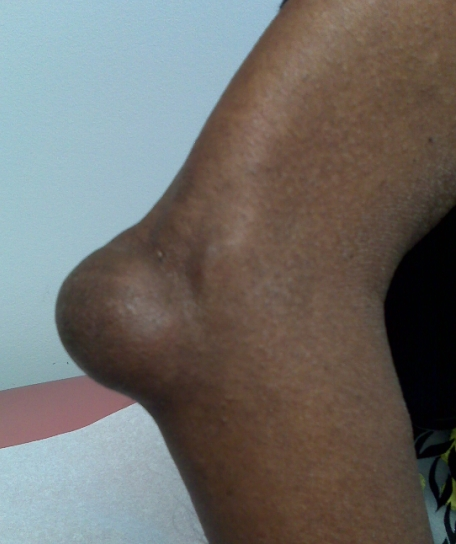olecranon bursitis
- related: MSK
- tags: #msk
Overview
-
pt:
-
cause:
- overproduction of bursa fluid
- mechanical: pressure, friction, overuse
- inflammatory: autoimmune (RA)
-
sx:
- acute elbow pain with localized swelling
-
dx:
- aspiration to differentiate septic from sterile
Septic olecranon bursitis is common, and can be due to direct bacterial seeding of the bursa or extension from a local cellulitis. Staphylococcus aureus is the most common causative organism, which can gain entry to the bursa via penetrating trauma, repetitive friction, or extension from local cellulitis. Septic bursitis can occur as a primary syndrome or as an acute worsening of underlying chronic bursitis. It typically causes significant pain, tenderness, and erythema, but fever and systemic leukocytosis may be absent, especially in patients with underlying immunosuppression (eg, diabetes, chronic kidney disease).
Fluid should be sent for cell count, polarized microscopy, Gram stain, glucose, and culture. Sterile fluid typically has a cell count <500-1,500/mm3, although counts may be higher (up to 20,000/mm3) in gouty bursitis. In patients without a history of gout or rheumatoid arthritis, counts >3,000-5,000/mm3 suggest septic bursitis, even if Gram stain is negative. This patient has a fever and a high bursal leukocyte count, suggesting septic bursitis. Appropriate management includes drainage of the infected fluid and systemic antibiotics.
Mild septic bursitis in immunocompetent patients may be managed with oral antibiotics and close follow-up, but severe cases and patients with underlying immune compromise (as in this patient) should be admitted to the hospital for intravenous antibiotics.

